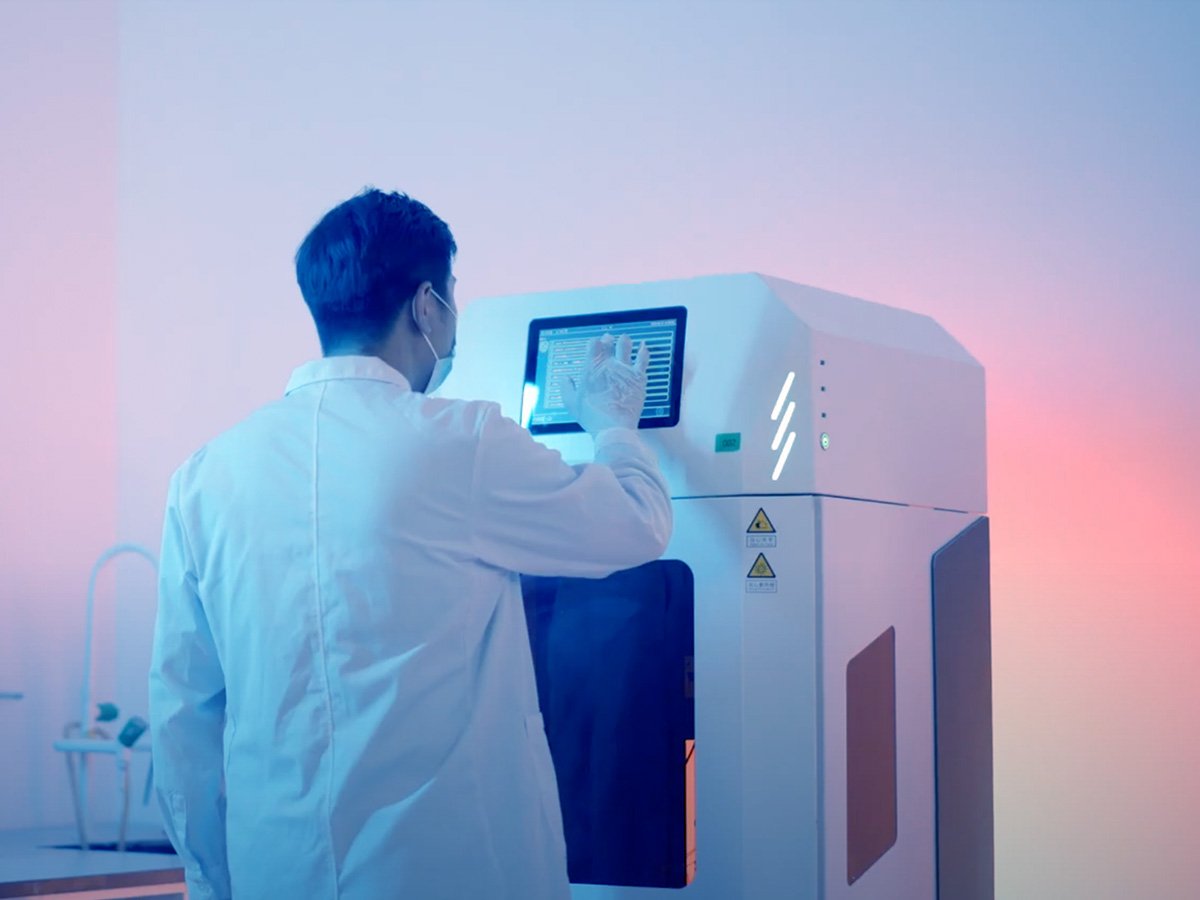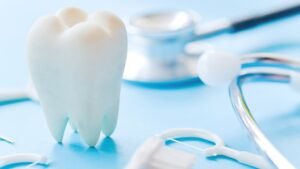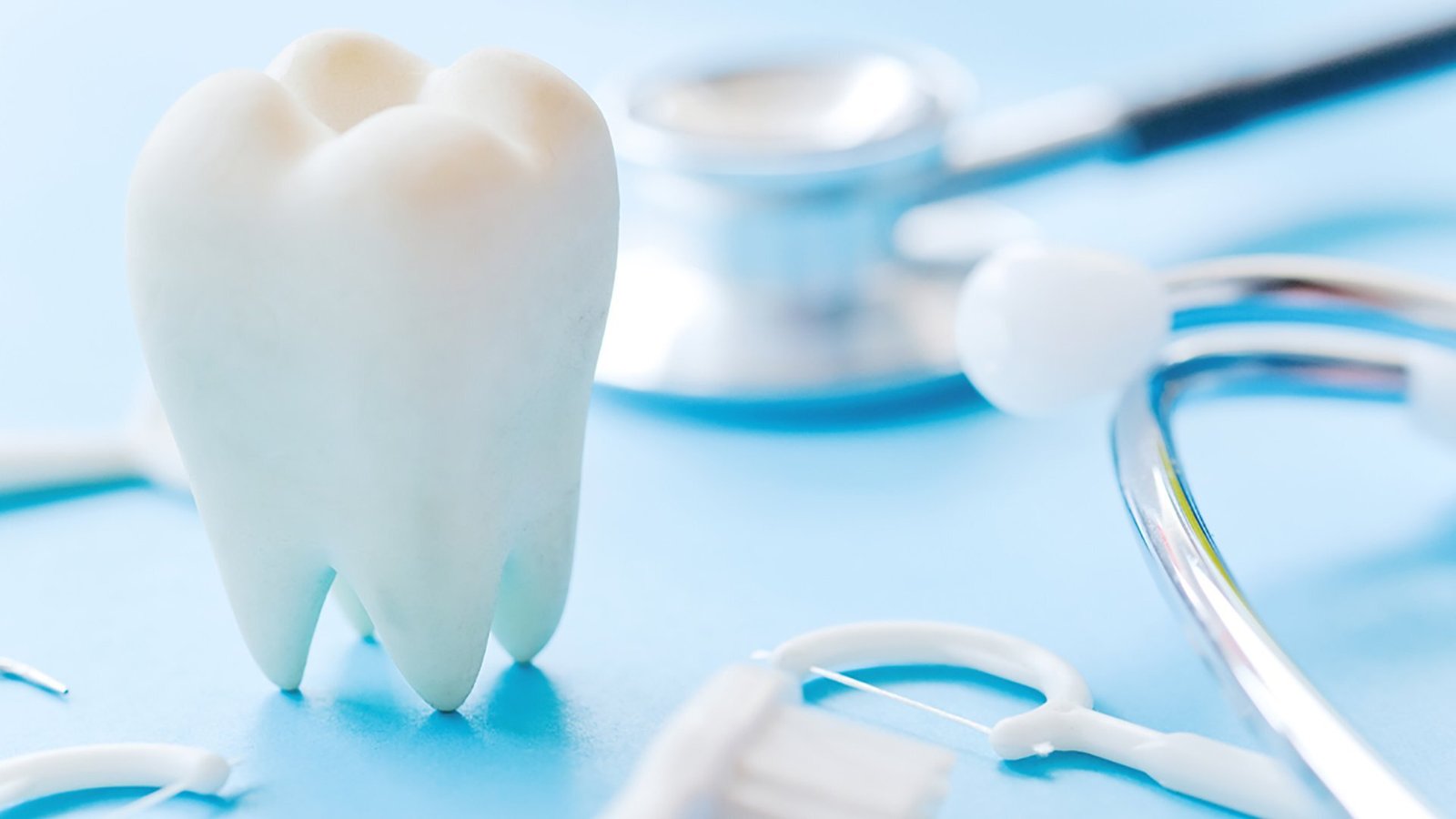Making dental restorations and prosthetics using the old way can lead to poor fitting. The restoration process takes days or even weeks. This makes the patient wait longer and feel uncomfortable. Sometimes, the gum rejects the restoration and becomes painful for patients.
These are not only the problems dentists face. They make messy impressions using trays that lead to ill-fitting and unhygienic crowns. However, CAD/CAM digital dentistry eliminates all these problems without breaking the bank. It makes the process of making restorations faster and gives your patients a better smile.
This article provides you with a general overview of how CAD/CAM digital dentistry works, its benefits, applications, and cost. So, keep reading to explore more!
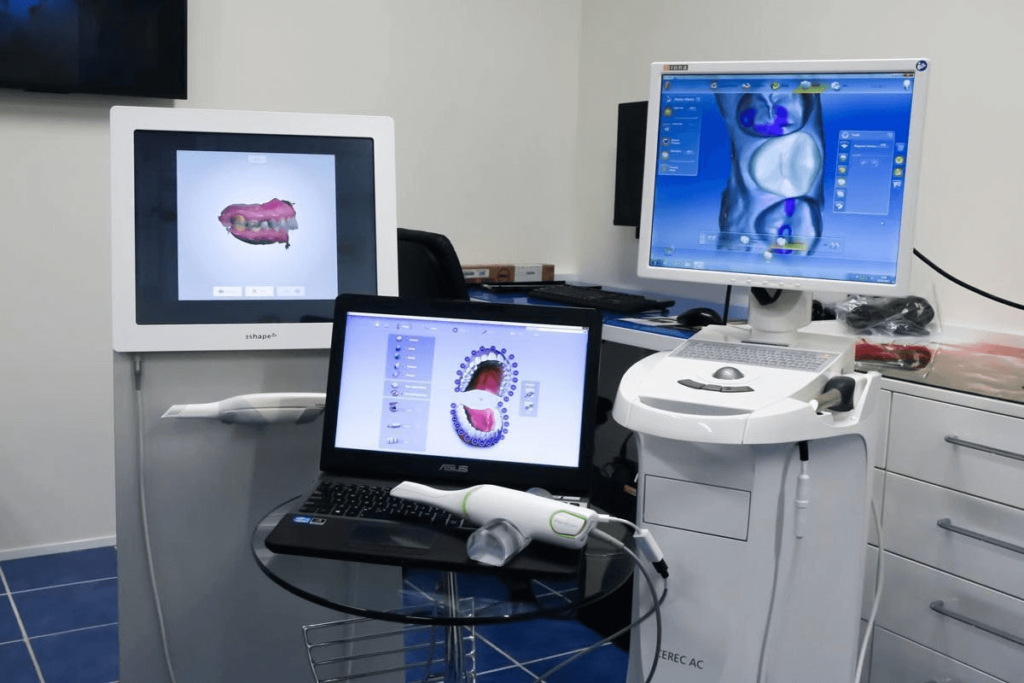
How Does CAD/CAM Digital Dentistry Work in a Clinical Setting?
CAD/CAM digital dentistry uses computers to help dentists make dental restorations like crowns, bridges, or veneers. It starts with a small camera called an intraoral scanner. It captures a 3D image of the teeth and gums.
Once the scan is complete, the image goes into a design software. After that, the final design is sent to a milling machine. The machine then creates the restoration from a solid block of material.
This process is cleaner, faster, and more accurate than traditional methods. It also gives lab technicians better control over the final fit and design. It saves time for both the dentist and the patient.
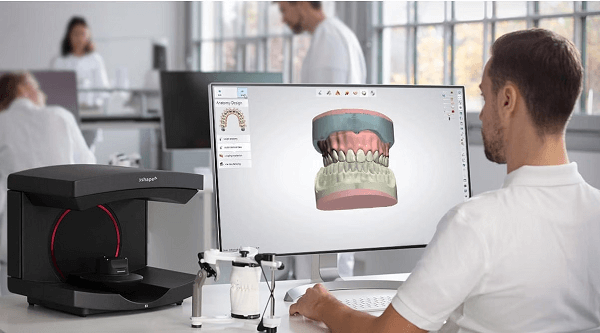
How Is CAD/CAM Impacting Dental Labs & Clinics?
The CAD CAM digital dentistry provides a lot of benefits in the dental field. It helps dentists and lab technicians work faster and provide better patient care. Each benefit improves treatment results.
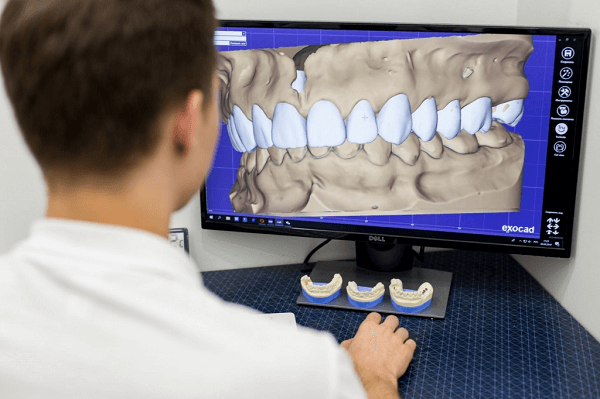
– Speed and Efficiency
CAD/CAM dental technology provides enough time to make same-day restorations. You can scan the mouth, design the crown or bridge, and mill it on-site. This saves time for both the dentist and the patient. You don’t need to send cases to the lab and wait days. It simplifies the entire process and enhances productivity in the clinic.
– More Accurate Restorations
The digital scans provide exact measurements of the patient’s mouth. The restorations fit better at the margins, which helps reduce adjustments. Because the design is based on detailed images, the crown or prosthetic sits correctly. This means fewer remakes and happier patients.
– Enhanced Patient Comfort and Experience
In the traditional method, patients spend a lot of time in chairs. With dental milling machines, patients no longer need messy impression materials. The digital scanner is quick and non-invasive. It makes the visit more pleasant. Also, showing patients their scan on the screen helps build trust.
– Better Communication Between Labs and Dentists
Digital files are easy to share and review. Dentists can send detailed scans directly to the lab. This reduces errors caused by unclear instructions or damaged impressions. Lab techs can also send back previews or suggestions before milling and make the process accurate.
Which Dental Treatments Use CAD/CAM Digital Dentistry Technology?
CAD/CAM dental technology became part of dental clinics and labs. Dentists use the CAD-CAM dental crowns machine to make simple crowns and full tooth replacements. Here are the main ways dentists and labs use CAD-CAM in their daily work.
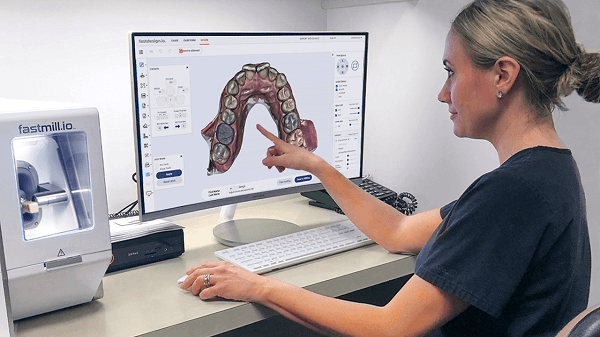
– Crowns, Bridges, and Veneers
Dentists use the CAD-CAM dental milling machines to make crowns, bridges, and veneers. The scanner gives an accurate 3D view. Dentists can design the shape, size, and color of the restorations with precision. The milling machine then creates the piece from strong ceramic. This results in a good fit, natural look, and less need for chairside adjustments.
– Inlays, Onlays, and Implant Abutments
Lab technicians use digital impressions in dentistry to make inlays and onlays. These restorations are often more conservative than full crowns. For implants, CAD-CAM is used to make custom abutments. These parts connect the implant to the final crown. Custom-made ensures a better fit with the crown above.
– Orthodontic Appliances and Aligners
CAD/CAM dental technology designs and prints clear aligners that move teeth gently over time. The system can plan each movement in a digital setup. Dentists and orthodontic labs can also use it to make retainers, splints, and night guards. This process is more accurate and less messy. It makes the aligners process easier for the team and more comfortable for the patient.
– Dentures and Full-Arch Restorations
You can also use digital impressions in dentistry to make dentures that fit better and last longer. A digital scan captures the shape of the gums and bite. This data is used to design full or partial dentures. They are then milled from strong, clean materials. Full-arch implant bridges can also be made with CAD-CAM. These are fixed in the mouth and look like real teeth.
Top 3 Leading Brands Providing CAD/CAM Dental Systems
In the dental world, there are a lot of brands that provide dental solutions. Many companies have offered tools and equipment for many years. Here are four trusted brands that provide reliable CAD/CAM digital dentistry tools.
– Aidite
Aidite is a well-known company mainly focused on innovation and cost-effective dental solutions. It is trusted by dental labs and clinics around the world. The brand provides a full CAD/CAM system made for both small clinics and large dental labs. Their tools are designed to be strong, easy to use, and budget-friendly.
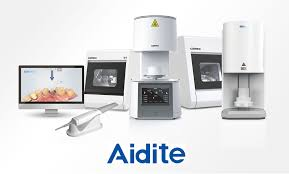
Aidite’s full CAD / CAM solution includes intraoral scanners, design software, milling machines, sintering furnaces, and 3D printing systems. All parts work together to make dental work faster and more accurate.
Key features of their CAD / CAM solution include:
- Scan, design, mill, and print
With Aidite, you can scan the patient’s mouth, design the restoration, and make it right away. Their software helps dentists and technicians work faster and better. It supports crowns, bridges, dentures, implants, and even full-arch cases.
- Covers Milling and 3D Printing
Aidite’s milling machines work for both dry and wet milling. They are good for zirconia, glass ceramics, and more. Their 3D printing system helps labs make custom dentures with speed and detail.
- Easy to learn and use
From scanning to final fit, Aidite’s tools are made to be simple. Even beginners can use them without trouble. This makes digital workflows smooth, fast, and accurate for everyone.
– Planmeca
Planmeca is a dental tech company that is known for its precision and accuracy. The brand provides different dental tools and equipment. It includes a scanner, design software, and milling unit. Their CAM/CAD digital dentistry system makes mills, crowns, and bridges quickly and with high accuracy. Their system also helps dentists to plan implants and restorations from start to finish.
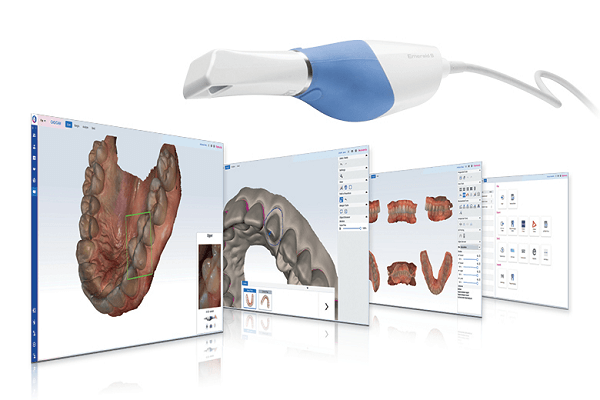
– 3Shape
3Shape is a Danish company and a top name in dental scanning. It helps dentists and labs go digital with easy tools and smart workflows. The brand is widely used because it connects well with many labs and software types. Their CAD-CAM dental solution includes the main tools, such as intraoral scanners and CAM milling machines. It speeds up lab work by using clean, shareable digital files.
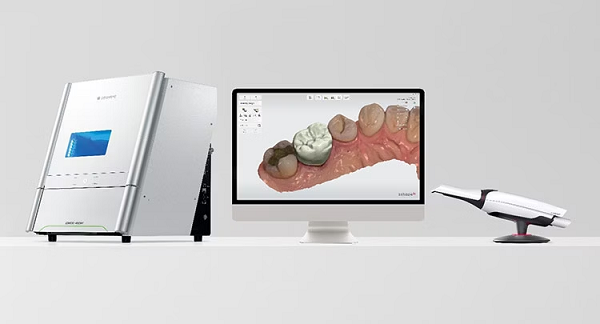
Cost of CAD CAM Digital Dentistry
The cost of CAD/CAM digital dentistry can be high due to the latest technology. Buying the full system can cost between $25,000 and $150,000 or more. Some smaller units cost less, but still need a big budget. This price changes from place to place.
In some countries, tools may cost more due to import taxes or shipping fees. In other places, local sellers offer better prices or payment plans. The cost also depends on the brand, features, and how new the system is. A basic setup may be cheaper but has fewer tools.
FAQs
What is the importance of CAD-CAM technology to dental assistants?
CAD-CAM helps dental assistants do their job better. They use it to scan teeth, design crowns, and help make new teeth fast. It saves time and keeps things clean. They don’t need to mix messy stuff for impressions. It makes the whole dental visit faster.
What is the application of CAD-CAM in prosthodontics?
CAD-CAM helps make fake teeth in prosthodontics. It is used to design and build crowns, bridges, and dentures. The computer scans the mouth and shows the shape of the teeth. Then it helps make new teeth that fit well. This makes the work fast.
What is the CAD-CAM process used to produce a fixed prosthesis?
The CAD-CAM process starts by scanning the mouth. The scanner makes a picture of the teeth. Then, the computer helps design the fake tooth. After that, a machine cuts the tooth from strong material. This new tooth is called a fixed prosthesis.
Final Thoughts
To sum up, CAD/CAM digital dentistry has changed how dentists and labs make teeth. It makes work faster, cleaner, and more accurate. With the right machine, you can save time and give better care to your patients.
Before you buy a CAD/CAM system, think about what your clinic needs. Check the size, materials, and software that is easy to learn and works well with other tools you use. Also, check the support service of the brand. Aidite provides a cost-effective CAD/CAM machine without breaking the bank. Their support team provides a good warranty, and quick help can save you trouble later.

